Skiing is a super fun winter activity for the whole family! However, it also requires some preparation and precaution. We follow along with Tori Ski on Instagram for all the best tips and advice about skiing with kids.
Besides skis and boots, a kids ski helmet is one of the top pieces of needed gear.
It’s one of the simplest and thoroughly proven tools to increase your children’s safety.
In this article, we’ll discuss the best kids’ ski helmets and the factors you should take into account before purchasing one.
Why use ski helmets?
9–19% of the winter sports-related injuries that ski patrols and emergency rooms record are head injuries. The incidence of head injuries amongst both adults and kids has now been proven to decrease by up to 60% when kids wear helmets.
Normalizing wearing helmets will go a long way toward injury prevention.
- And for when the weather warms up, check out some fantastic kids’ rain gear and boots!
In this post:
- What to Look for When Buying a Kids Ski Helmet
- Best Toddler Ski Helmet
- Best Kids 4-6 Ski Helmets
- Best Kids 7-10 Ski Helmets
- Best Combo Ski Helmet/Goggles
- Best Budget Ski Helmets
- Accessories
- How To Fit A Kids Ski Helmet
- Buying Considerations
- FAQs
We get commissions for purchases made through links in this post. As an Amazon Associate, we earn from qualifying purchases.
What to Look for When Buying a Kids Ski Helmet
Here are some things to consider when picking out a helmet for your child:
Size
Adult helmets are made of the same material as kids’ helmets, but it’s unsafe for younger skiers to wear poorly fitted helmets. It’s crucial that you choose the proper size!
A helmet that is too loose or too tight will not provide the proper head protection; the right ski helmet will be snug but not tight.
Take your child’s ski goggles along when you shop for their helmet to allow them to try the helmet on while wearing them. This guarantees that the helmet fits them comfortably even while they’re wearing their goggles.
Comfort
If we don’t have a properly fitted helmet and goggle combination, the child won’t want to wear their protective gear. This defeats the whole purpose, so it’s imperative the child’s helmet is comfortable.
Look for ski helmets with removable ear padding or a lining. These will make the user comfortable in the cold without the extra weight or bulk a hat would add.
A fleece chin strap cover also adds warmth and comfort to the child’s ski helmet.
Weight is also crucial for comfort. A lightweight ski helmet will reduce fatigue on the neck and back throughout the day and won’t give your kids a reason to leave the ski helmet at home.
- We also touch on the importance of comfort in our article on kids’ electric dirtbikes!
Certifications
The important thing is that the ski helmet is certified!
The most popular certification for snow helmets in the U.S. is ASTM F2040, while CE-EN1077 is more popular in Europe. These certifications include headgear for snowboarders and non-motorized recreational snow activities. They prove that the producer is making helmets that are secure, reliable, and suitable for usage in any chosen winter sport.
Checking for either label on a helmet’s inner surface can reveal if it carries an ASTM F2040 or CE-EN1077 certification.
Snowboard Helmets
There is no practical distinction between snowboard helmets and ski helmets. Choosing a ski or snowboard helmet is primarily a matter of taste. A snowboard helmet can be worn while skiing and vice versa.
Your primary considerations will be size, comfort, and certification.
- Looking for other ways to get outside with kids? Check out our list of free outdoor activities for kids!
BEST TODDLER SKI HELMET
Wildhorn Spire

We’ve found this to be one of the best kids’ ski helmets for the smallest of riders!
Junior-sized Spire helmets are the same helmet as the standard Spire helmets, just sized down.
They offer protection comparable to that of adult ski helmets. Each helmet can be adjusted to achieve the ideal fit.
Before you reach the mountains, make sure you test it out on your children with all their layers on, including their ski goggles! The ideal fit is tight yet cozy.
Protip: give kids lots of opportunities to wear/explore the helmet at home so they’re used to it by the time you hit the slopes.
Specifications
Ages: 3 to 8.
Protection: ASTM certification, which indicates that all safety regulations have been met by the helmet.
Removable Liner: Expanded polystyrene foam liner and moisture-wicking nylon liner.
Adjustable: The toddler ski helmet has an integrated adjustable dial fit system.
Check prices for Wildhorn Spire Helmet
BEST KIDS SKI HELMET 4-6
OutdoorMaster Kelvin Ski Helmet

Here is another of our favorite helmets for kids!
This helmet is offered in different sizes from small, medium, to large to accommodate older children or those who need larger sizing options, unlike other helmets that may only come in small or x-small for youngsters.
The liner is removable and machine washable making cleaning easy. They also offer 14 color choices so you aren’t stuck with only a black or white helmet.
Specifications
Ages: 4 years upwards.
Protection: EPS foam liner with a reinforced ABS shell.
Removable Liner: An inner fleece liner and removable ear pads.
Adjustable: It has an adjustable dial fit system.
Check prices for OutdoorMaster Kelvin Ski Helmet
BEST KIDS HELMET 7-10
Smith Glide Jr. MIPS

While a bit more expensive than other helmets on this list, we have found this one to be super comfortable for kids!
The Smith Glide Jr. MIPS Helmet is lightweight and so comfortable that kids won’t even notice they’re wearing it. It is one of the least expensive helmets available, but it still includes the usual helmet safety certifications and MIPS rotational protection technology.
When combined with Smith goggles, the Air Evac system helps vent warm air away from the lenses and face, keeping your ski goggles fog-free.
This is one of the best ski helmets for children who are reluctant to wear one. The custom fit and lightweight insulation will keep their heads warm and comfy all day.
Specifications
Ages: 7 to 10.
Protection: MIPS Protection System’s lightweight in-mold design merges the external shell and EPS foam into one seamless, robust piece.
Removable Liner: No. It has an undetachable fuzzy lining that provides warmth and comfort for the wearer.
Adjustable: There is an adjustable dial fit.
Check prices for the Smith Glide Jr Helmet
BEST COMBO SKI HELMET/GOGGLES
Giro Launch Combo Ski Helmet/Matching Goggles

This is a great all-in-one set!
It has a lightweight, dependable I.M. construction and one of the best-performing technologies in a good helmet. The ventilation system and soft lining keep kids comfortable all day.
For kids with big goals, the Giro goggles that match are packed with technology and beauty. A few of the key features are anti-fog coatings and a cylindrical lens that keeps the surroundings visible. No goggle fog means they’ll be able to navigate safely all day long.
The paired goggles also fit seamlessly with the helmet lip, preventing cold spots on your child’s head.
Specifications
Ages: 3 to 8
Protection: An impact-absorbing foam liner and a durable polycarbonate outer shell are combined by I.M. Construction.
Removable Liner: Soft, plush lining and earpads that may not be detachable.
Adjustable: Up to 6 cm of adjustment with its dial fit system.
Check prices for Giro Launch Ski Helmet & Goggles
BEST BUDGET SKI HELMET
Giro Ledge MIPS

This helmet is an excellent budget option for those looking to hit the slopes without spending a fortune.
It features a MIPS, which provides some of the most cutting-edge impact protection, which is challenging to find in budget helmets. The helmet also has fantastic venting and an Auto Loc 2 fit mechanism for a quick and secure fit.
Like the other helmets in the list, it is perfectly compatible with goggles by the same brand, namely the GIRO EXV goggles.
The best budget helmet for kids is also simply one of the best helmets around, and it’s at a great price.
Specifications
Ages: 6 years upwards
Protection: It’s made of a Hard Shell material, which consists of a tough outer shell linked to an EPS foam protection liner
Removable Liner: It has a removable liner and ear pads.
Adjustable: Adjustable with a dial fit system.
Check prices for Giro Ledge Ski Helmet
ACCESSORIES
Goggles:
Smith Gambler Youth Goggles

We have so many pairs of Smith googles and have been so happy with them all!
The Smith Gambler Goggles and the kid’s helmet fit together perfectly. The Gambler’s anti-fog, cylindrical Carbonic-X lenses are designed to be the strongest impact-resistant in the world. It features a floating foam membrane that minimizes the pressure on the temples caused by the ski goggles.
These will fit most kids’ ski helmets and won’t break the bank.
Fun Covers:
CrazeeHeads Stretch Helmet Cover

A silly winter helmet cover can help make wearing a helmet fun for kids! We love these sparkly unicorn, princess hat, and cute giraffe covers!
The unique covers also make it easier to identify people on the ski slopes, eliminating the guessing game.
The covers fit over most helmets and are easily removed to be washed or for swapping helmets.
The cover also allows space for ski goggles to sit properly on the ski helmet.
HOW TO FIT A KIDS SKI HELMET
You’ll need a tape measure, although a lengthy ruler and even a piece of rope will also work. To measure, you’ll need to find the broadest part of the child’s head. Typically, it’s directly above the temple and eyebrows (forehead).
To do this, hold the tape measure with one hand and loop it horizontally around the child’s head. Ensure that the tape is snug but not too tight. Then, using the tape measure, confirm your child’s head size.
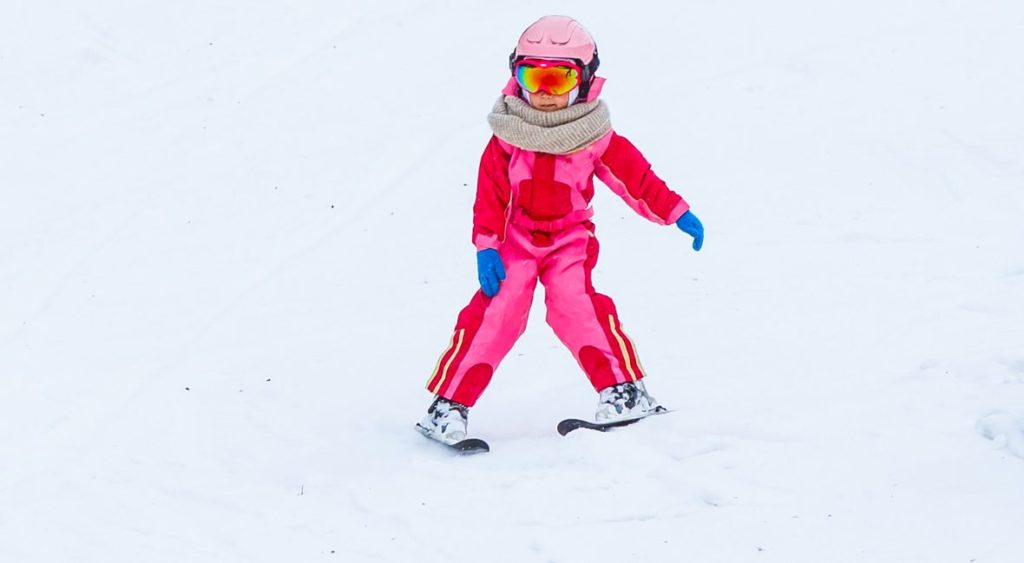
BUYING CONSIDERATIONS
When buying a kid’s ski helmet, it can be challenging to filter through all the flashy features. Key features of the ski helmets should include certification, proven protection, and quality construction.
Protection Type
Numerous styles and protective materials are available depending on the company and the purpose of the ski helmet during snow sports. They include EPS, SXP from Pro Tec, Hard Hat Brock, Zipmold, and SEPP/EPP from POC.
• Standard
The standard consists of two categories, Class A and Class B, which have different test criteria and helmet designs. These two class divisions result from customer preferences. Class B was developed to address the request of snowboarders and skiers who prefer more venting and improved hearing, but Class A has a wider protective reach and high absorption resistance, making it ideal for ski racing headgear.
• MIPS
The best kids’ ski helmets come with MIPS technology, which significantly lessens the rotational torque during a biased impact, improving brain protection. Since this extra technology increases the cost of ski helmets, it is primarily seen on high-end versions of kids’ helmets.
• WaveCel
The interior of some helmets are lined with a foldable cellular foam structure called WaveCel. It is intended to protect your head from wounds inflicted by some incidents more effectively than conventional youth ski helmets.
Construction
• In-mold Helmets
In-mold helmets are made with an inner layer of EPS foam and an incredibly thin outer layer of plastics which is molded onto it. Consequently, the ski helmet is incredibly lightweight and small.
• ABS Helmets
Ski helmets designed with infused ABS (Acrylonitrile Butadiene Styrene) include an EPS (Expanded Polystyrene) protection cushion sandwiched between the tough outer ABS plastic shell and the interior of the helmet. Though a little thicker, ABS helmets are rather strong and durable.
• Hybrid Helmets
Hybrid helmets combine in-mold technology on the lower portion and ABS injection on the upper portion.This gives skiers and snowboarders a nice balance between featherweight lightness, shock absorption, and protection.
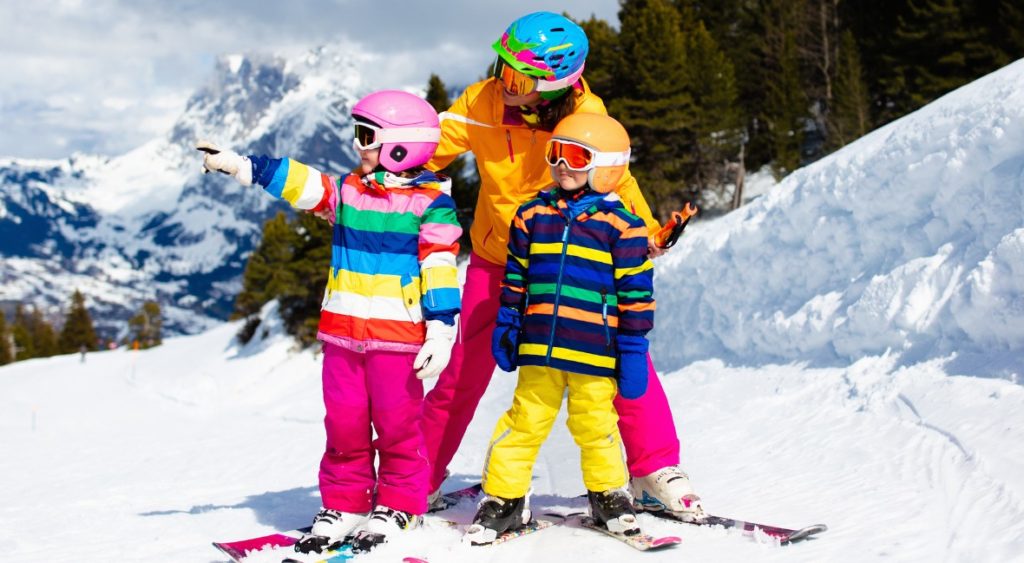
FAQs
1. Do kids need to wear a helmet while skiing?
Yes!
There are no laws (that we’re aware of) that require children to wear helmets when skiing. But it’s strongly advised that they always wear one. It is simple gear to buy and offers enormous safety.
Ski helmets are crucial for kids as they provide protection against head injuries, which are common in skiing accidents. Helmets can absorb the impact of a fall or collision, reducing the risk of serious head trauma.
2. At what age should kids start wearing ski helmets?
Kids should wear ski helmets as soon as they start skiing or snowboarding. Even toddlers on the slopes should have their heads protected, as accidents can happen at any age.
3. Can my kid just wear a bike helmet while skiing?
No!
Depending on the activity, various helmets offer differing degrees of protection to various regions of the head. Ski helmets are specifically designed to protect against the types of impacts and cold weather conditions encountered while skiing.
Never wear a bike or skateboarding helmet while skiing or snowboarding.
4. What features should I look for in a good ski helmet for my child?
Look for helmets that meet safety standards, have adjustable sizing to accommodate growth, offer good ventilation, and have comfortable padding. Additional features like a built-in visor or compatibility with goggles can also be beneficial.
5. How should a ski helmet fit my child?
A ski helmet should fit snugly on a child’s head without being too tight. There should be no gap between the helmet and the head, and the chin strap should be comfortably secured to ensure the helmet stays in place during skiing.
6. Is it safe to buy a used ski helmet for kids?
Yes and no…
It’s highly recommended that you purchase a new ski helmet unless you have a hand-me-down that you bought when it was new and has seen very little wear. Used helmets may have hairline or other damage as a result of packaging or accidents.
You want the helmet to work efficiently and without any issues when your child falls.
7. Can my child wear a hat under their ski helmet?
Wearing a thin beanie or skull cap under a ski helmet is usually fine as long as it doesn’t affect the fit of the helmet. Avoid bulky hats that could compromise the helmet’s safety and fit.
8. How often should I replace my child’s ski helmet?
Ski helmets should be replaced every 3 to 5 years or after a significant impact or accident that compromises the helmet’s integrity. Regular inspection for wear and tear is also important.
Final Thoughts
Whether skiing or snowboarding, helmets are an absolute necessity and make skiing a safe activity for kids.
Ski helmets for kids have become safer, more comfortable, and even more affordable than ever. There’s no excuse to hit the slopes without one!

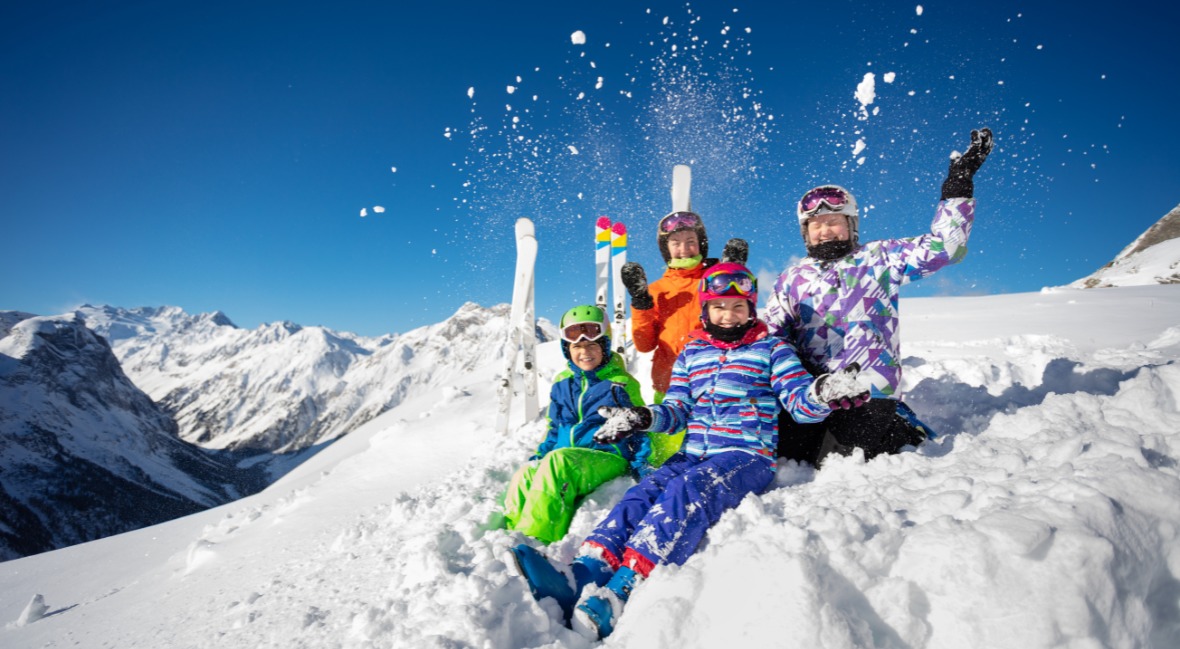
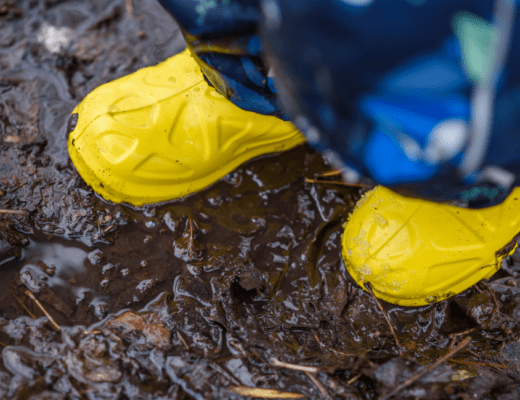
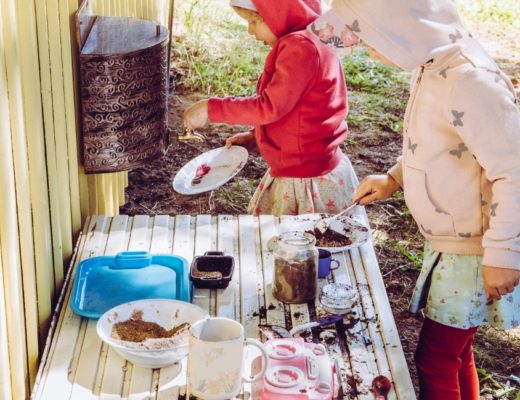
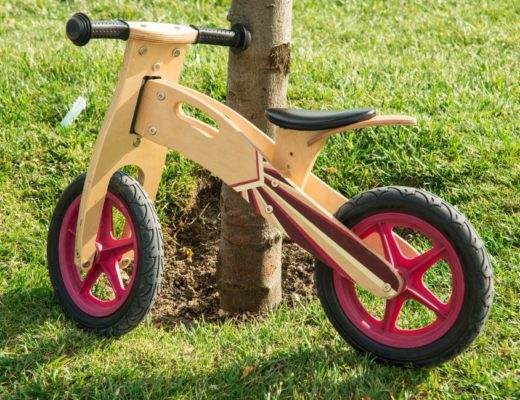
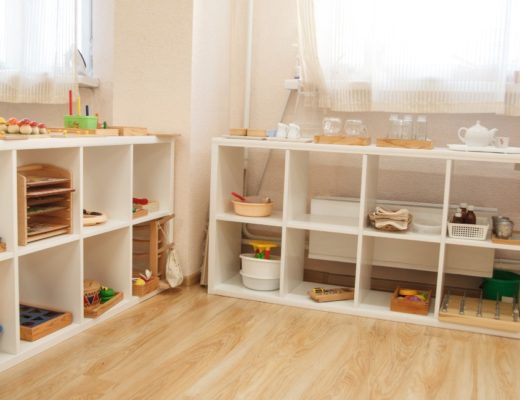
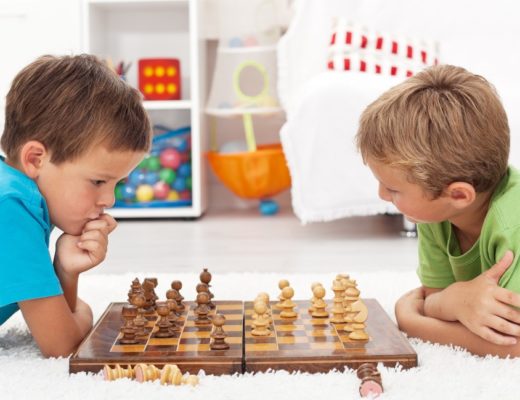
No Comments